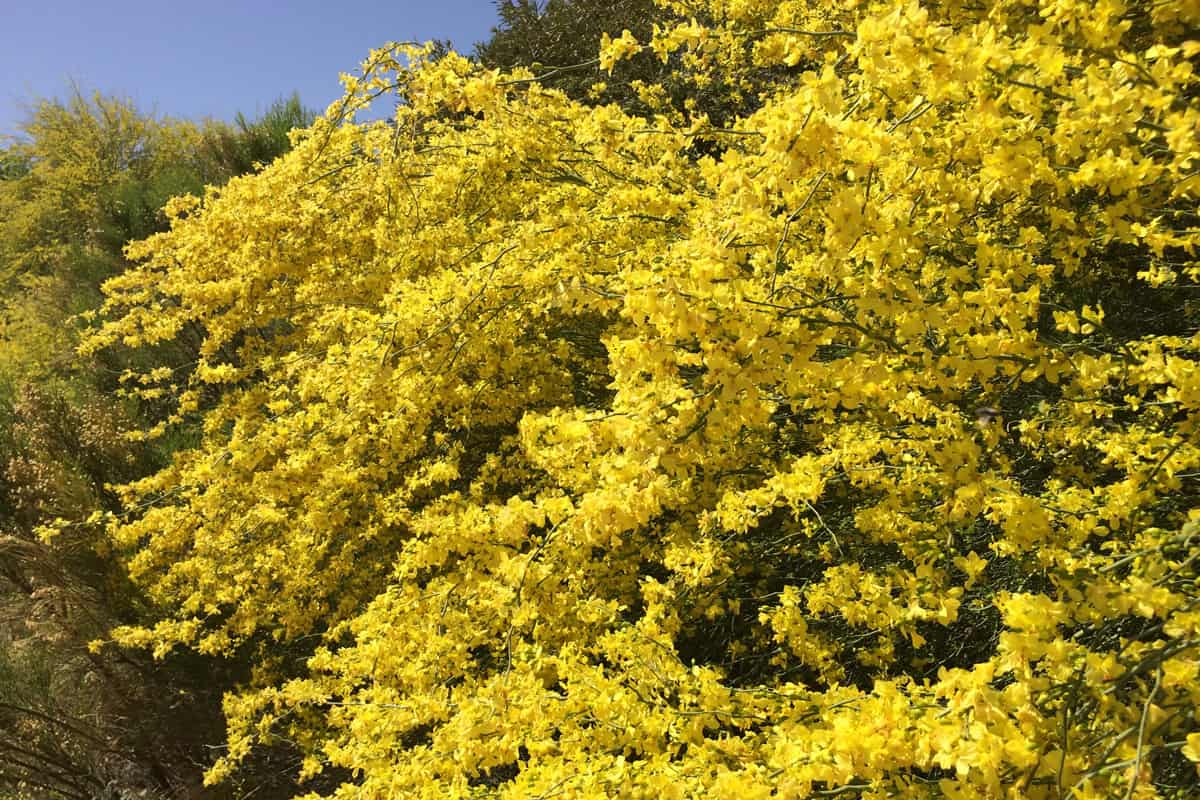Palo verde trees can grow up to massive heights in the wild, but if you're growing one in your yard, you'll probably want to keep it small and manageable.

Fortunately, with a few simple steps, you can maintain a small, compact palo verde tree that still looks beautiful and majestic.
Read on for tips and tricks on how to keep your palo verde tree small, so you can enjoy its unique beauty without worrying about its size.Methods for Keeping a Palo Verde Tree Small
Palo verde trees are a popular choice for arid and semi-arid regions, thanks to their striking green bark and yellow flowers.
Palo verde trees are beautiful and drought-resistant, but they can quickly grow to be quite large.

If you don't have the space for a full-sized tree or simply prefer a smaller tree, you can prune branches, remove suckers and water sprouts, and use growth inhibitors.
By combining these techniques and staying consistent with your maintenance, you can keep your palo verde tree at a size that fits your yard.
Branch Pruning

The best time to prune a palo verde tree is in the winter while the tree is dormant.
This is when the tree has the least amount of sap flowing through its branches, which means it will be less stressful for the tree to be pruned. Pruning during this time will also help to promote new growth in the spring.
Use clean, sharp pruning shears to remove any dead, diseased, or damaged branches.
Additionally, you can remove any branches that are growing too close to each other, as this can cause rubbing and damage to the bark.
Root Pruning
Another way to keep your tree small is root pruning. This technique involves cutting the roots of the tree to limit its growth.
To root prune your tree, dig a trench around the tree's drip line and cut through the roots with a sharp spade.
Be careful not to damage the main roots as this can affect the tree's health.
Root pruning should be done in the early spring or late fall.
Selecting the Right Variety

Choosing the right variety of palo verde trees can also help keep it small.
Some varieties, such as the Desert Museum Palo Verde, are known for their small size and slow growth rate.
When selecting a variety, make sure to consider the tree's mature size and growth rate to ensure it fits your needs.
Tools Needed for Pruning

Before you start pruning your palo verde tree, make sure you have the right tools for the job. Here's what you will need:
Pruning Shears
Pruning shears are essential for small branches and twigs. They are easy to handle and allow for precise cuts.
Choose a pair of pruning shears that are comfortable to hold and have sharp blades. Dull blades can damage the tree and make the job more difficult.
Check out this professional tree trimmer on Amazon.
Loppers
Loppers are ideal for cutting branches that are up to 2 inches in diameter.
They have long handles that provide leverage and make it easier to reach high branches.
Look for loppers with sharp blades and a comfortable grip. Make sure to clean and oil your loppers after each use to keep them in good condition.
Check out this lopper on Amazon.
Hand Saw
A hand saw is necessary for cutting larger branches. Look for a saw with a curved blade that is designed for cutting wood.
Make sure to choose a saw with a comfortable handle and a blade that is sharp and durable. Keep your saw clean and dry to prevent rust and damage.
Safety While Trimming
Remember to wear protective gear when pruning your palo verde tree.
Wear gloves, eye protection, and long sleeves to protect your skin from scratches and cuts.
How to Trim a Palo Verde Tree
Now that you have the right tools and know when to prune your tree, it's time to get started. Here are the step-by-step instructions for trimming your palo verde tree:
- Start by removing any dead or damaged branches. Identify the branches that need to be pruned.
- Use your pruning shears or loppers to cut off any branches that are broken or diseased. Make sure to cut the branch at a 45-degree angle, just above the branch collar.
- When pruning larger branches, use a pruning saw to make the cut. Make a shallow cut on the underside of the branch first, then make a second cut from the top to remove the branch.
- Focus on removing branches that are growing downward or crossing over other branches. These branches can damage each other and make the tree more susceptible to disease.
- Thin out the center of the tree by removing any branches that are growing towards the middle. This will allow more sunlight and air to reach the center of the tree.
- Finally, trim the top of the tree to keep it at the desired height. Use your hand saw to cut off any branches that are too tall or growing at an awkward angle.
- After pruning, make sure to clean your tools with rubbing alcohol to prevent the spread of disease.
Remember to take your time and make each cut carefully. Avoid cutting too much at once, as this can damage the tree and make it more susceptible to disease.
Here's a helpful video on how to trim this type of tree:
Signs That Pruning Is Needed
It's important to keep an eye out for signs that your palo verde tree needs pruning.
If you notice any dead, diseased, or damaged branches, they should be removed as soon as possible.
Other signs that your tree needs pruning include:
- branches that are crossing or rubbing against each other
- branches that are growing too close to power lines or other structures
- branches that are blocking sunlight from reaching other parts of the tree
Reasons for Keeping a Palo Verde Tree Small
There are several reasons why you may want to consider keeping your Palo Verde tree small, including:
1. Preventing Damage to Property
One of the main reasons to keep your tree small is to prevent damage to your property.
These trees can grow quite large, and their branches can spread out wide, potentially causing damage to roofs, gutters, and other structures.
By keeping your tree small, you can minimize the risk of damage to your property.
2. Maintaining Aesthetics
Another reason to keep your palo verde tree small is to maintain the aesthetics of your property.
If your tree grows too large, it can overwhelm your yard and make it look cluttered.
By keeping your tree small, you can ensure that it fits in with the rest of your landscaping and doesn't become an eyesore.
3. Ease of Maintenance
Finally, keeping your tree small can make it easier to maintain.
Large trees can be difficult to trim and prune and may require professional help.
By keeping your tree small, you can easily maintain its shape and keep it healthy without having to hire someone else to do the work.
Final Thoughts

Regular trimming and pruning is the key to a healthy, compact palo verde tree. Start early and maintain a consistent schedule to prevent the tree from growing too large.
Remember to use sharp, clean tools and make clean cuts to avoid damaging the tree.
It's best to trim the tree during the winter months when the is dormant and less susceptible to stress. This will result in new, healthy growth in the spring.
Does your palo verde tree seem to be dying? Check out this article to find out what you can do: Why Is My Palo Verde Tree Dying? [And What To Do]






